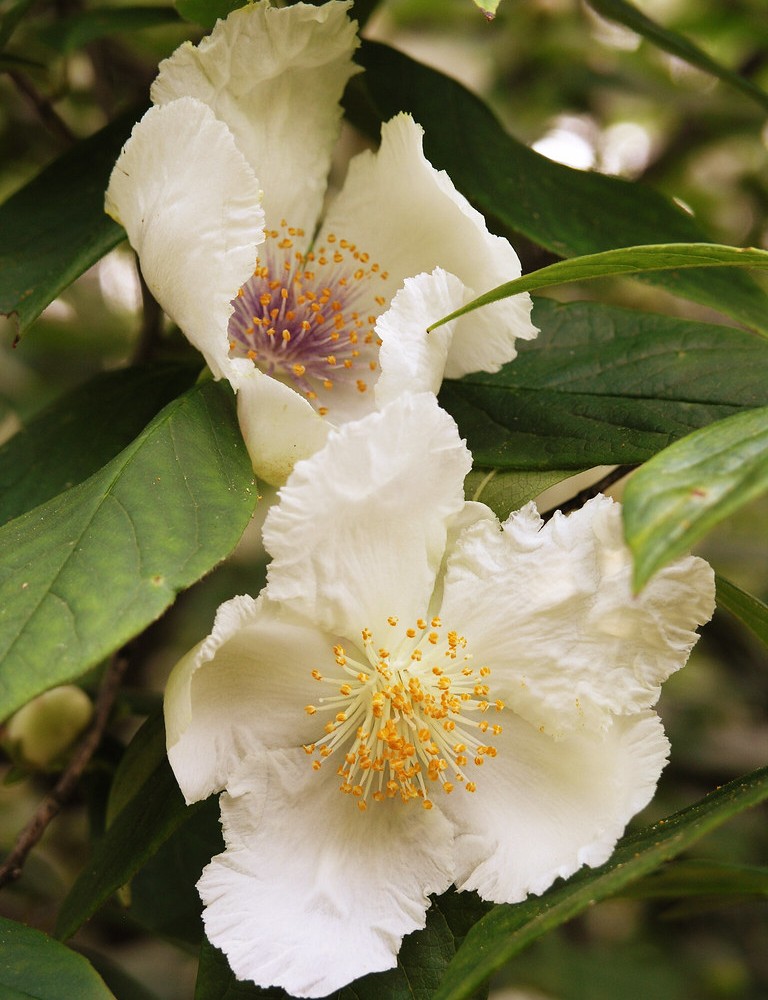Mountain camellia
(Stewartia ovata)

Description
Stewartia ovata, known commonly as mountain camellia, is a small tree native to low to mid-elevations in the southern Appalachian Mountains and nearby regions from Mississippi to Virginia. It is a member of the Theaceae, the tea family. Although not endangered, the plant does have a limited range and is uncommon throughout its range. Mountain camellia grows in the understory of predominately hardwood forests and tends to be found near streams, usually at elevations below 800 m (2,600 ft). Stewartia ovata is a deciduous flowering shrub or small tree growing to 5 meters (16 2/3 feet) tall, with smooth, flaking grayish-orange bark. The leaves are oval with an acute apex, 7–13 cm (2.8–5.1 in) long and 3–6 cm (1.2–2.4 in) broad, and turn orange, red, or gold when the tree becomes dormant in the fall. The flowers are camellia-like, 6–12 cm (2.4–4.7 in) in diameter, with five white petals and numerous white, yellow or purple stamens; they appear in early to mid-summer. Stewartia (sometimes spelled Stuartia) is a genus of 8-20 species of flowering plants in the family Theaceae, related to Camellia. Most of the species are native to eastern Asia in China, Japan, Korea, Laos, Myanmar, Thailand, and Vietnam, with two (S. malacodendron, S. ovata) in southeast North America, from Virginia and Kentucky south to Florida and Louisiana. They are shrubs and trees, mostly deciduous, though some species (e.g. S. pteropetiolata) are evergreen; the evergreen species form a genetically distinct group and are split into a separate genus Hartia by some botanists, but others retain them within Stewartia. The Asian species include both shrubs and trees, growing to 3–20 m tall, while the American species are shrubs growing 3–5 m tall, rarely becoming small trees. The bark is very distinctive, smooth orange to yellow-brown, peeling in fine flakes. The leaves are alternately arranged, simple, serrated, usually glossy, and 3–14 cm long. The flowers are large and conspicuous, 3–11 cm diameter, with 5 (occasionally 6-8) white petals; flowering is in mid to late summer. The fruit is a dry five-valved capsule, with one to four seeds in each section. The species are adapted to acidic soils, and do not grow well on chalk or other calcium-rich soils. They also have a high rainfall requirement and will not tolerate drought.
Taxonomic tree:







